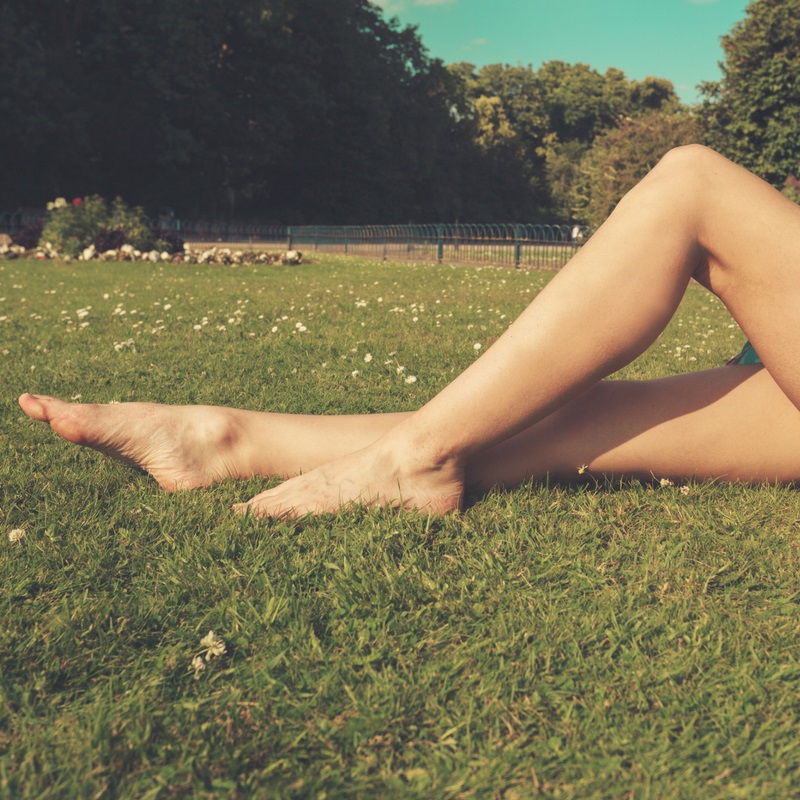Are You Putting Your Best Foot Forward?
Posted by Naturally Safe Cosmetics on 15th Jan 2018
Picture the scene . . .
You’re in a social situation with some friends at a party or just sitting at a café sipping a latte and you notice a lovely woman nearby. Your eyes are drawn to her: she’s attractive, she’s wearing a lovely Summer dress, her makeup is flawless, her hair is styled in the latest fashion. She looks great! Then as your eyes drift lower, you notice that she’s also wearing a gorgeous pair of strappy sandals. Hmmm . . . I wonder where she got those from? And that’s when it hits you – her feet! Now, I’m not talking about a case of slightly dry, scaly skin. I’m talking cracks baby – big, deep cracks, the kind that resemble the bottom of a parched, waterless riverbed in the midst of a 3 year drought. What the?
Now, don’t get me wrong. I do not believe in, or take pleasure in, shaming women. But, ladies, really! What are you thinking? Why are you neglecting your feet? And you can’t tell me those super dry, rough, cracked heels don’t hurt like the dickens. I know if I get just the slightest sign of hard skin or a callous, I feel the pain immediately, but maybe that’s just me.
Aside from being painful, looking unsightly and potentially causing embarrassment, there is the health aspect too. Foot health is an important part of our overall health.
What causes cracked heels?
Cracked heels are the result of dry or thick skin becoming fragile to the point where it eventually splits apart. There are numerous causes of dry, cracked heels, which can also affect the balls of your feet. These include:
- a lack of moisture
- effects of ageing, e.g. loss of elasticity
- walking around barefoot, or in open footwear like sandals and thongs
- prolonged standing (especially on hard floors), pregnancy, excess weight – causing the fat under the heel to expand sideways, leading to stretching of the skin and cracking
- lack of hygiene
- fungal infections like tinea
- prolonged exposure of feet to damp conditions
- vitamin and mineral deficiency
- hormonal problems
- circulation problems
- genetics
- certain medical conditions

By the way, ill-fitting shoes and frequent wearing of high heels can also wreak havoc with your feet – witness the lovely girl in the accompanying image who has gorgeous legs but her feet look a little worse for wear. You can see that her right foot appears to be sporting a bunion along with a callous on her big right toe.
So, what can you do at home to care for your feet?
If the cracks on your feet are severe, or you have corns, callouses or bunions, I recommend you visit a podiatrist for some expert advice and treatment. Podiatrists can quickly remove hard skin, which can help improve the condition of your feet and make them less painful too.
If your feet problems are relatively minor, you can probably tackle them yourself at home. Here are some simple steps you can take to keep your feet in top condition (yes, pun intended!):
- Use a pumice stone or foot file to remove hard, dry skin – this can done wet or dry. Once your feet are relatively smooth, you can maintain their condition by using an organic skin exfoliator like Eco By Sonya Pink Himalayan Salt Scrub or Giovanni Hot Chocolate Sugar Scrub. Not only do these body exfoliators help to remove dead skin, but they’re also very hydrating.
- Moisturise your feet with a super nourishing organic lotion, cream or balm. Make sure it’s thick and rich to really soften and protect the skin. Something like Clemence Organics Baby & Mum Balm or Miessence Intensive Body Cream would be ideal. The most important thing is that you moisturise.
- To really boost the effects of your moisturiser, try moisturising and putting on a pair of socks before going to bed – this one’s best reserved for the cooler months of the year!
- Wear closed shoes and socks where possible to prevent the skin on your feet from drying out. Again, this one is easier during the colder months.
- Don’t forget to drink plenty of water. This benefits the skin all over your body by increasing hydration.
- Don’t wear tight fitting shoes, especially around the toes – this can lead to corns and bunions.
NOTE: Foot care is especially important for people with certain medical conditions, like diabetes. If you have a medical condition that may affect the health of your feet or that may be affected by the condition of your feet, you should consult your G.P., healthcare professional or podiatrist for professional advice.
Sources: scholl; podantics

